Smaller cars pace Detroit Auto Show reality check
By John Gilbert
DETROIT, MICH. — For the last couple of years, a grey cloud of doubt and pessimism provided the undercurrent at the North American Auto Show. But when the 2011 show kicked off with two media preview days on January 10-11, all was positive and uplifting by comparison. That hardly means the traditional domestic Big Three of Ford, General Motors and Chrysler are on secure footing, but it does mean they seem to be on the right track for returning to respectability and, more important, profitability.
So eager are members of the automotive media to help out with the respect for the “home” teams, 49 North American media types kicked off the “Go Detroit” theme by naming the Chevrolet Volt the 2011 North American Car of the Year, and the Ford Explorer the Truck of the Year. The decided leaning toward domestic nameplates among the journalist jury of independent voters showed the plug-in electric Volt collected 233 points, to 163 for the runner-up Hyundai Sonata, and 94 for the pure-electric plug-in Nissan Leaf. Explorer’s margin among truck finalists was larger, with 253 points to 138 for the runner-up Jeep Grand Cherokee, and 99 for the Dodge Durango in a battle among three domestics.
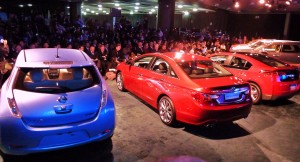
Electric Nissan Leaf, left, Hyundai Sonata, winning Chevrolet Volt awaited Car of the Year decision.
The awards all have significant merit, although they also show that the manufacturers might have come farther from the “good old days” than the media, in getting past two major hurdles — expensive vehicles, and large SUVs. In the industry, consumer demands have caused every manufacturer to strive to build more fuel-efficient vehicles costing under $25,000, and the same manufacturers have accepted the public avoidance of large, truck-based SUVs and are building compact crossover SUVs so fast they are one of the largest segments in automotives. The media voters, however, chose the Volt’s electric-with-gas-engine-backup technology, even though it costs over $40,000 and is not yet available throughout the country, over the Sonata, which has a South Korean name but is designed and built entirely in the U.S., costing about half the Volt’s price tag.
The same held in trucks, where the Explorer has been redesigned as a unibody SUV, expanded to three-row length, and it beat out Ford’s own revised and maybe more-popular Edge crossover to gain finalist stature from the jury, along with the reincarnated unibody Durango, meaning two of the three finalists were elongated three-row vehicles, while consumers have emphatically made compact two-row-seating crossovers — including the runner-up Grand Cherokee — the top-sellers in the segment.
The majority of those of us on the jury went for breakthrough technology, high-price and largeness, but nonetheless, Ford was the most prominent domestic company challenging the top import brands with promising new smaller vehicles. The soon-to-be introduced Focus compact will be joined by the C-Max, a popular European downsized van-style vehicle, the better to compete with a couple of mainstays from Japanese companies like Honda, Toyota and Mazda.
Toyota has expanded the Prius from being a hybrid car to being an entire brand with model variation to include a sporty model, a wagon, and a plug-in electric. Honda introduced a new Civic, but as a concept, which is Honda’s method of classifying new cars until actual production is ready for the showroom. Like the 2011 Odyssey, the Civic is not expected to change at all from its shown concept form when it reaches showrooms in the next couple of months. Mazda, having just introduced the Mazda2 subcompact, is showing its newly redone Mazda5, which might be the precise target Ford is aiming at with the C-Max.
From Korea, Hyundai follows up its brilliant Sonata midsize sedan and the compact Elantra introduced in November at the L.A. show with a new and small Veloster, plus a Curb concept vehicle, both with promising futures in the impressive Hyundai portfolio.
Kia, which now uses Hyundai powertrains, follows up the flashy Optima with the KV7 concept vehicle, which looks like an elongated Soul without the hamsters. The Soul’s introduction was accompanied with highly popular commercials showing a with-it family of hamsters weaving through traffic, driving their Soul. Since then, it seems the company is almost embarrassed by the hamsters’ popularity, when it should have adopted cute little cuddly critters as the company icon. Kia differentiates from Hyundai in tuning and design, and pulled off a coup, if not a coupe, by hiring Peter Schreyer from Audi as chief designer. His touch is evident in the Optima, and he was at Detroit, taking the podium to introduce the KV7. “The passenger van needs honest intervention,” Schreyer said. “A van is a box, so why try to hide it? Celebrate the box.”
With that, he unveiled the squarish KV7, which has a series of vertical LED rows for headlights, and a horizontal red strip around the rear as tailight, with the light modulating and circulating. But the bigger surprise was inside. A large, gull-wing passenger side door opened toward the ceiling, and with the front passenger door open, it created a large expanse, the better to see — as well as climb — inside. A lounge-chair-like seat stretches along the passenger side rear wall, and four bucket seats all rotate on their ultra-contemporary posts. With Wi-fi enabled connectivity, Schreyer said, “It’s not just another van.”
From Germany, Volkswagen introduced its newest Passat, which will be the roomy, larger midsize sedan that will be made in the ultra-new plant in Chattanooga, Tenn.
Mercedes displayed its newly face-lifted C-Class, and a fuel-cell electric car, plus a flat-fluorescent yellow sports coupe that was identified as an SLS AMG Coupe, complete with “Ecell” electrified power. BMW unveiled its compact 1-Series in “M” designation high-performance form, as well as a luxurious 6-Series convertible. Porsche opened the whole press-day with a predawn breakfast and then showed off a 918 RSR hybrid racing coupe that looked ready to roar out of Cobo Hall and head directly for LeMans. Audi unveiled its new A6 sedan, the midsize car between the growing A4 and the luxury A8.
Sweden chipped in, with Volvo displaying a crash-barrier tested C30 electric vehicle as the highlight of the second press preview day. Saab, like Volvo, is operating under positive financing by new ownership — Saab under Dutch ownership and Volvo now operating under a Chinese holding company. India’s Tata Motors also enters the scene as new owner of both Jaguar and Land Rover.
The global influence on the auto scene blends together, as Fiat assumes control over Chrysler Group, LLC., and will distribute the minicar Fiat 500 through selected Chrysler dealerships. Chrysler, along with the classy new 300, puts the 200 in showrooms as replacement for the Sebring, while Dodge adds the Avenger to its restyled Charger.
The European influence prevails at Ford, too. While the Explorer won Truck of the Year as a completely redone SUV with a third-row seat for family hauling, the Focus and C-Max vehicles will join the Fiesta and be priced under $20,000 and be powered by smaller 4-cylinder engines, including the 1.6-liter EcoBoost turbocharged 4s that have the power of V6es with the economy of 4s. The van-style C-Max copies the Mazda5’s sliding side doors which have proven so popular with their shopping-center parking lot operation. A very advanced styling exercise was called the Vertrak Concept was popular at the Ford stand, amid reports it will come to life as the replacement vehicle for the Escape, and will modernize the popular crossover with new sleek lines.
General Motors also talked fuel economy, leading with the Volt, which has a small gas engine to take over once you drain the 40-50 mile limit on the plug-in electric charge. Chevrolet also introduced the Sonic, a small compact, and showed off the coming Camaro convertible. Buick’s division introduced the Verano, a Chevrolet Cruze-based compact that will challenge Buick’s heritage of entry-luxury models, as its first-ever attempt at such downsizing.
Chrysler’s 300 comes with the new corporate Pentastar V6, a potent but economical alternative to the Hemi V8. Chrysler’s Jeep division displayed a new Compass, a bit more rugged and offroad friendly, catching up in restyling to the Patriot and Grand Cherokee. Those vehicles filled out the array of all the revised Dodge and Chrysler cars and trucks which ranged from entirely new to at least getting interior makeovers, but which were introduced in November at the Los Angeles Auto Show. They include the Dodge Charger and the Chrysler 200, which replaces the Sebring, as well as the Grand Caravan and Town & Country minivans.
Outside Cobo Hall, as sure as the chill of wintertime replaced the glitzy indoor displays of the auto show, the price of regular gasoline was posted at over $3 per gallon, with prospects rumored that $4 might arrive by summertime. And just like springtime’s warmth, the emergence of the various plug-in electric, hybrid, and much smaller but fuel-efficient vehicles can’t arrive too soon.
Comments
Tell me what you're thinking...
and oh, if you want a pic to show with your comment, go get a gravatar!


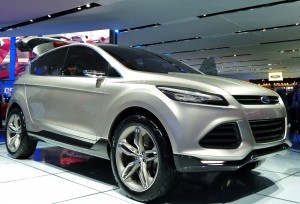
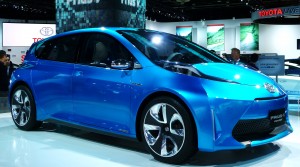
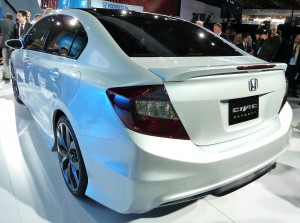
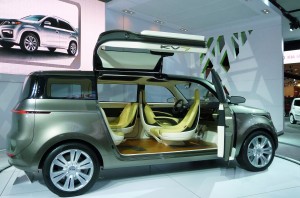
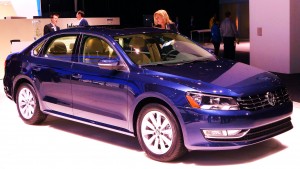
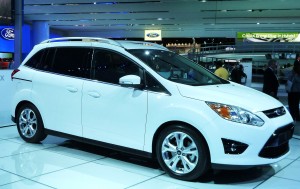
 John Gilbert is a lifetime Minnesotan and career journalist, specializing in cars and sports during and since spending 30 years at the Minneapolis Tribune, now the Star Tribune. More recently, he has continued translating the high-tech world of autos and sharing his passionate insights as a freelance writer/photographer/broadcaster. A member of the prestigious North American Car and Truck of the Year jury since 1993. John can be heard Monday-Friday from 9-11am on 610 KDAL(www.kdal610.com) on the "John Gilbert Show," and writes a column in the Duluth Reader.
John Gilbert is a lifetime Minnesotan and career journalist, specializing in cars and sports during and since spending 30 years at the Minneapolis Tribune, now the Star Tribune. More recently, he has continued translating the high-tech world of autos and sharing his passionate insights as a freelance writer/photographer/broadcaster. A member of the prestigious North American Car and Truck of the Year jury since 1993. John can be heard Monday-Friday from 9-11am on 610 KDAL(www.kdal610.com) on the "John Gilbert Show," and writes a column in the Duluth Reader.